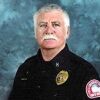If you ever find yourself grumbling to about having to memorize the U.N. classes and divisions of hazardous materials, remember the two massive explosions in the port of Tianjin, China, that killed more than 100 people and injured over 800.
Of the dead, 40 were firefighters. That number is likely to climb as more than 50 firefighters are still considered missing.
Damage was recorded miles from the incident center, and the total number of life and property lost as a direct result of this event may not be known for years.
China’s ministers are investigating and, while blame in the form of arrests appears to be moving ahead of determining cause, certain facts have emerged to begin the learning process from this calamity.
This was a warehouse district less than 2 miles from residences. The port was known to unload hazardous and flammable chemicals including calcium carbide, sodium cyanide, potassium nitrate, ammonium nitrate and sodium nitrate.
These are the chemicals at the top of any hazmat operations-level quiz and certainly spoken about at the awareness level. Their NFPA 704 ratings are well known as are the U.N. numbers for the various solutions they are transported as.
Chemical blasts
The two main explosions were the equivalent of 3 tons of TNT for the first and 21 tons for the second. To gain perspective, realize that the second explosion hit 2.9 on the Richter scale — same as a minor earthquake — and was picked up on satellites orbiting Earth.
Shipping containers weighing 1,000 pounds each were tossed around like cardboard boxes. Renault and Hyundai had their newly minted vehicles parked and waiting for transport. Over 8,000 vehicles were completely burned.
There was fire before the explosions, hence the large amount of firefighters killed or injured. While calcium carbide and sodium cyanide are touted to be the explosive agents for the main blasts, many of the chemicals stored in such warehouses would be water reactive.
Specifically, small detonations that released gases, transferred energy or a flame or spark ignition source could have been the primer for larger explosions.
Sodium cyanide, while flammable but not inherently explosive, releases hydrogen cyanide when exposed to water and those vapors would be lethal when inhaled — even initially. The chemical combinations were lethal, regardless of individual properties, before firefighters arrived and long before the first explosions.
Untrained response
China has a three-tier firefighting system. The top-tier firefighters are considered to be “in the system” and are treated and compensated much like police. The lowest tier consists firefighters employed by state or private businesses.
The Tianjin Port Group, the government-turned state/private company in charge of port operations, hired its 240 firefighters much like contract employees from a temp service.
These young, inexperienced and poorly trained firefighters from the company’s fire brigade were first on scene and used water in an attempt to knock down the fires.
Many of the injured firefighters stated that the fires grew larger, their experience with foam was minimal and that “no one told them the fire involved chemicals,” according to the New York Times.
The main blasts occurred about an hour after their arrival. Final disposition of the initial attack occurred after the influx of military experts well-equipped for hazmat intervention and a tactical switch from water to foam and sand for suppression.
Now there are over 1,000 first responders on scene, looking for victims and attempting to neutralize all of the various chemical soups pooling throughout the scene.
While we may never know all of the details of this devastating event, it reminds us of the tremendous penalties for losing containment of any hazardous material, regardless of type and quantity.
The lessons
The narratives coming out of China point to many safety violations regarding quantities stored and chemical information disseminated. Seemingly, there was a lack of training and experience for the contract firefighters and no orientation to the products prior to their arrival.
The Chinese equivalent of NFPA 704s or MSDS information was lacking on scene and never presented to en route firefighters via dispatch.
Finally, firefighters responding directly to the site had no hazmat PPE or equipment. And their decision to put water on the fire demonstrated tunnel vision exacerbated by a total lack of hazmat training, even at the basic level.
The Chinese firefighters who responded to this catastrophic event had not been trained to even the rudimentary principle that any uncontrolled release of a hazardous substance requires that any and all emergency actions occur from outside the release area, regardless of size.
The severity of the situation reported, including location, products and their containment issues, should have prompted evacuation measures regardless of any mitigation decisions made.
These poorly trained firefighters did not understand or appreciate the complexity of hazardous materials and the effects of combining them. It cost firefighter and civilian lives as well as the property they were trying to protect.
When the horrific reality of hazmat risks is dropped in our laps, that little orange ERG book isn’t nearly so mundane or grumble-worthy.













